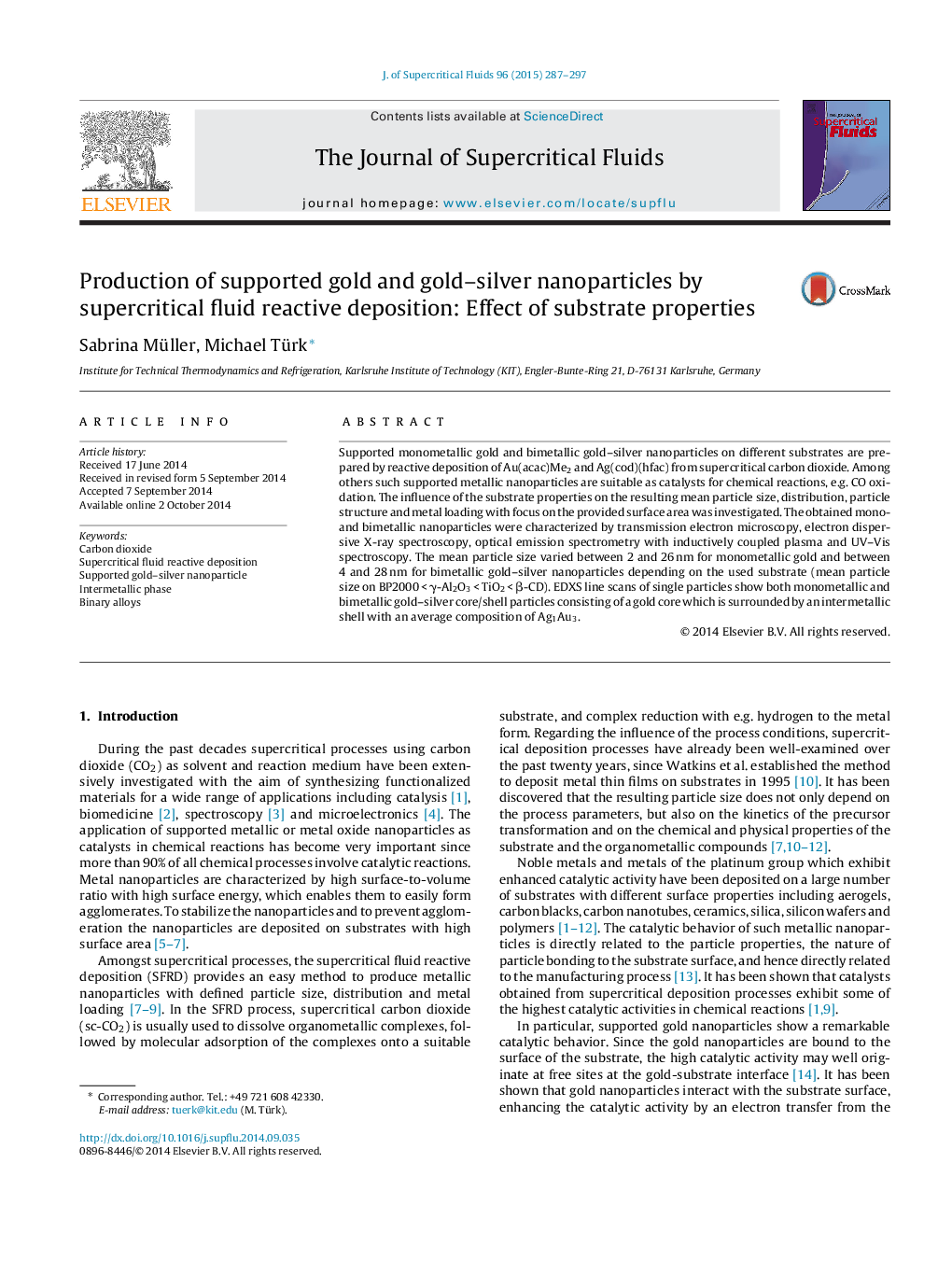| Article ID | Journal | Published Year | Pages | File Type |
|---|---|---|---|---|
| 230463 | The Journal of Supercritical Fluids | 2015 | 11 Pages |
•Supported Au and bimetallic AuAg-nanoparticles were prepared using supercritical fluid reactive deposition (SFRD).•Influence of various substrates (BP2000, γ-Al2O3, TiO2 and β-CD) and therewith specific surface area on particle size and metal loading were evaluated.•Formation of bimetallic particles consisting of a gold core surrounded by an intermetallic gold/silver phase is reported.•The intermetallic gold/silver phase is composed of 25% Ag and 75% Au.
Supported monometallic gold and bimetallic gold–silver nanoparticles on different substrates are prepared by reactive deposition of Au(acac)Me2 and Ag(cod)(hfac) from supercritical carbon dioxide. Among others such supported metallic nanoparticles are suitable as catalysts for chemical reactions, e.g. CO oxidation. The influence of the substrate properties on the resulting mean particle size, distribution, particle structure and metal loading with focus on the provided surface area was investigated. The obtained mono- and bimetallic nanoparticles were characterized by transmission electron microscopy, electron dispersive X-ray spectroscopy, optical emission spectrometry with inductively coupled plasma and UV–Vis spectroscopy. The mean particle size varied between 2 and 26 nm for monometallic gold and between 4 and 28 nm for bimetallic gold–silver nanoparticles depending on the used substrate (mean particle size on BP2000 < γ-Al2O3 < TiO2 < β-CD). EDXS line scans of single particles show both monometallic and bimetallic gold–silver core/shell particles consisting of a gold core which is surrounded by an intermetallic shell with an average composition of Ag1Au3.
Graphical abstractFigure optionsDownload full-size imageDownload as PowerPoint slide
